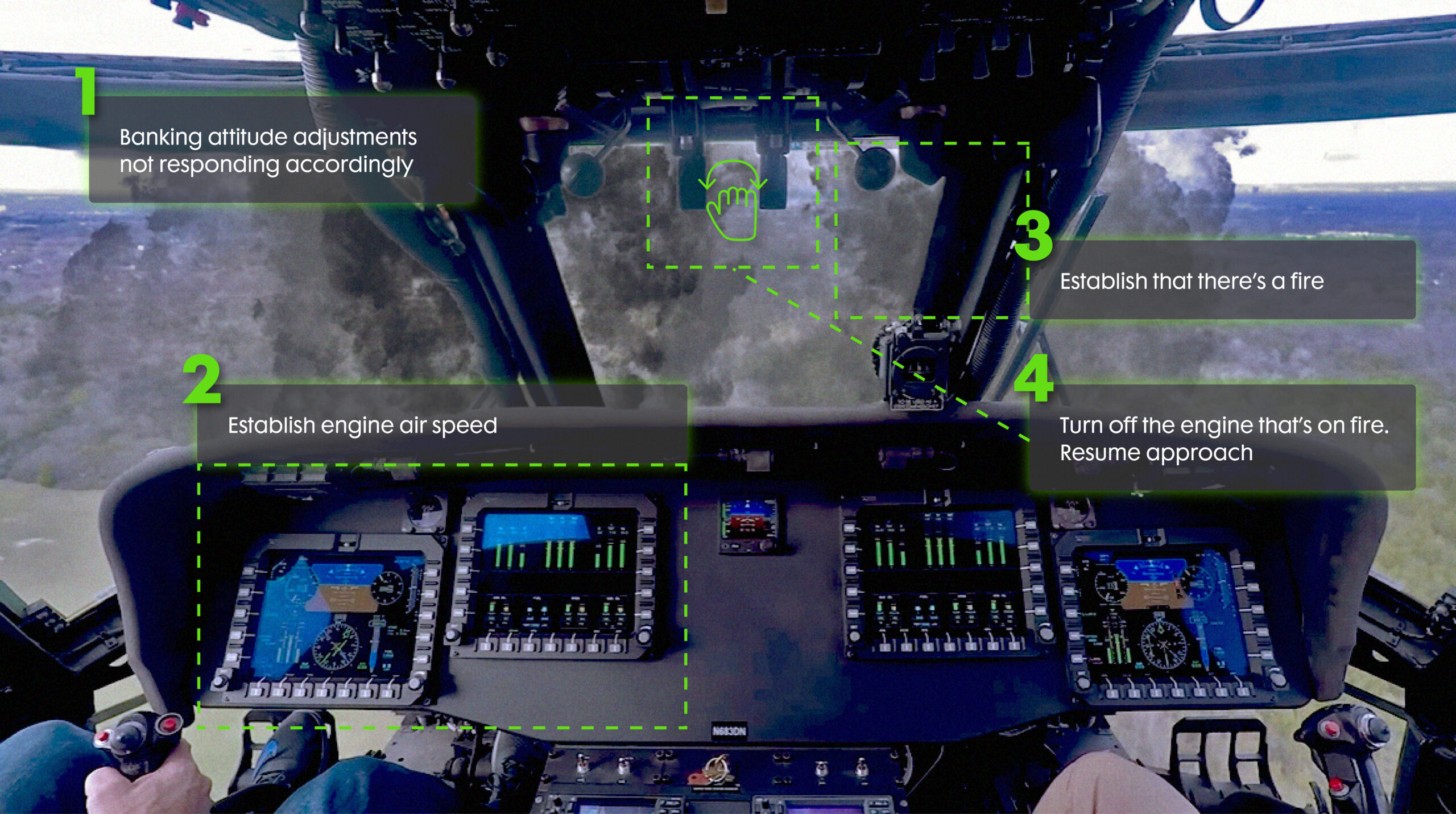
Northrop Grumman’s prototype AI assistant will help rotary pilots perform expected and unexpected tasks such as augmenting the crew’s response to an engine fire in this example. (Northrop Grumman)
WASHINGTON: Artificial intelligence “assistants” embedded in augmented reality headsets may help Blackhawk pilots “see” critical information to perform tasks and deal with emergencies.
Under a new contract awarded by the fringe science Defense Advanced Research Projects Agency, Northrop Grumman, in partnership with the University of Central Florida, will develop a prototype AI assistant called the Operator and Context Adaptive Reasoning Intuitive Assistant.
OCARINA “will support UH-60 Blackhawk pilots, who fly with both visual and instrumented flight, which varies with weather, time of day and other environmental factors,” Northrop announced today in a press release.
“Rotorcraft aircrews face numerous demands particularly when flying in close proximity to buildings, terrain, people and from the threat of adversary RADAR systems,” according to the release. “Today, simple warning systems are the most common means for aiding a rotorcraft aircrew, such as auditory alerts to increase altitude. These warning systems are limiting and can induce unanticipated cognitive burdens on pilots. Studies have shown that inattentional blindness to such warnings can occur, often making them ineffective for the aircrew.”
RELATED: Army says next-gen AR goggles delayed over field of view issues
The prototype is meant to aide in the recognition and reduction of errors, improve task completion time and help prevent catastrophic events, like engine fires, for example.
The contract was awarded from DARPA’s AI technology-focused Perceptually-enabled Task Guidance (PTG) program.
RELATED: AI can save taxpayers money: JAIC chief
“The goal is to provide users of PTG AI assistants with wearable sensors that allow the assistant to observe what the user perceives and know what the user knows,” according to the press release. “Using advanced information processing and an AR interface, the goal of the program is to have the AI assistant provide feedback and guidance through speech and aligned graphics at the right place and time to augment the aircrew.”
Air Force picks Anduril, General Atomics for next round of CCA work
The two vendors emerged successful from an original pool of five and are expected to carry their drone designs through a prototyping phase that will build and test aircraft.


























